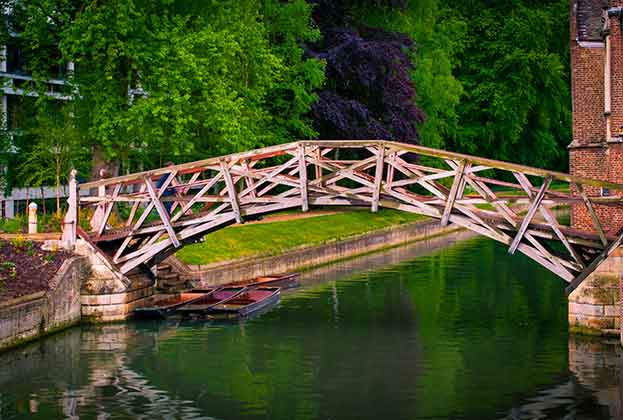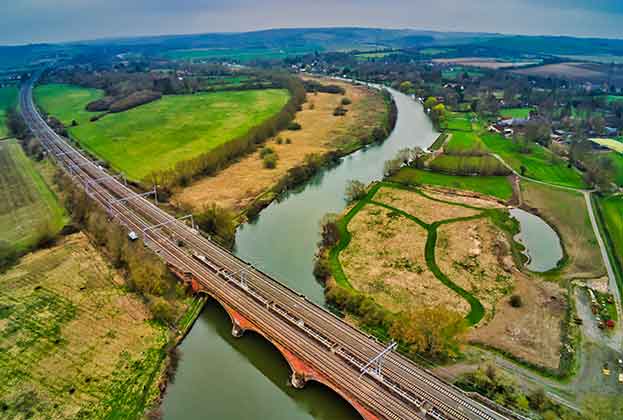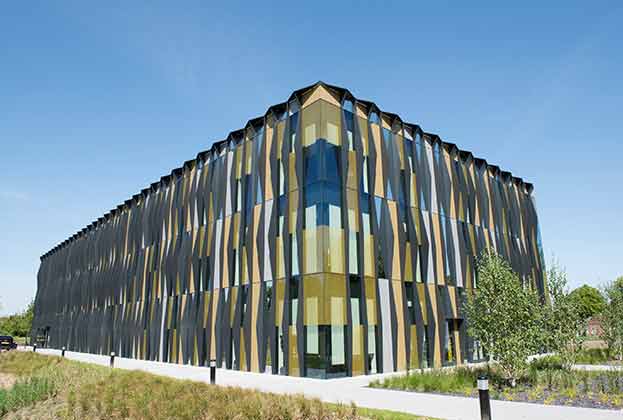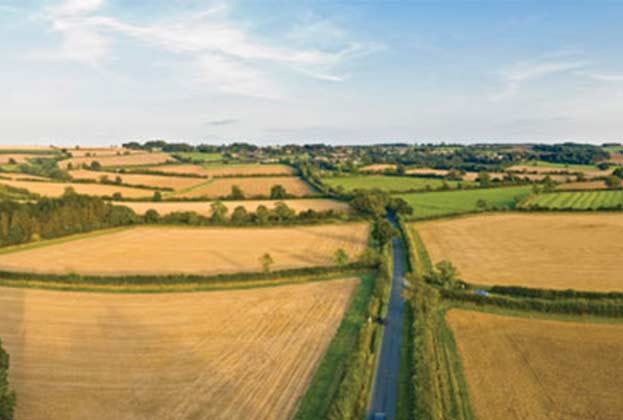How does the area measure up when compared to its international competitors?
The degree of success of the arc will be determined in part by the growth of competing locations across the globe. It is key to deliver the most appropriate office and R&D space within specific sectors including healthcare and high-value automotive to retain and expand those sectors within the arc.
Healthcare is an obvious sector to concentrate on. Analysing the flow of capital into this sector provides the clues as to the dominant global locations. Of the top global locations, that have attracted venture capital and private equity, the UK is in fourth place, with nearly £15 billion raised in the last five years. However, this is significantly behind the US at £206 billion. China is second overall at £22 billion.
A review of the Global Innovation Index 2019 (Cornell University, INSEAD, and the World Intellectual Property Organization), with a focus on global health, shows the relative strengths of 129 economies, of all scales. The ‘best’ Science & Technology clusters using scientific publications and patent filings under the World Intellectual Property Organization (WIPO) data for Patent Co-operation Treaty (PCT) shows where the UK sits, but more specifically, Oxford and Cambridge.
Both are in the top 100, with Cambridge 58th, nestled between Rome and Sao Paulo; Oxford in 71st place between Delhi and Vancouver (London is 15th and Manchester is 92nd, the other two UK clusters in the top 100). Both Oxford and Cambridge have not moved in the rankings, whereas almost all Chinese clusters moved significantly up the rankings.
Strengthening of the arc will push UK locations higher, eventually challenging for a top 10 place.
It is clear that for the life science cluster in the arc region to compete internationally there needs to be greater collaboration between major centres. There are localised initiatives which are improving connectivity between research and industry, although this needs to be expanded across the region. The Life Science Sector Deal 2 ambitions include the UK being the world’s most innovative economy. The collective strength of the arc’s Life Science cluster can help achieve this objective if there is sufficient collaboration and the physical connectivity of the region improves.
There are other world-leading clusters which are located in the arc. The aerospace cluster includes the Harwell Science and Innovation Campus, Oxfordshire which comprises 90 space organisations and employs nearly 1,000 people and is the largest space cluster in Europe.
Westcott Venture Park, Aylesbury is a growing space cluster with a notable specialism in upstream space. The world-renowned Life Science clusters in Oxford and Cambridge are the most productive in Europe. These two clusters compete with international world-leading locations.
However, for the arc Life Science clusters to remain competitive in the future, there needs to be an acceleration in the delivery and provision of laboratory space. There is currently circa 175,000 sq. ft. and sub-50,000 sq. ft. of laboratory space available in Cambridge and Oxford, respectively, whilst in Boston, there is around 250,000 sq. ft. available of a total stock of 13.5 million sq. ft., highlighting the comparative shortfall of laboratory space in the arc.
The arc can compete globally on its affordability, prime office rents in Cambridge and Oxford are approximately £45 per sq. ft. whereas in West Cambridge (Boston), they are over $90 per sq. ft. There will need to be a conscious decision from developers and investors to price office and laboratory space appropriately in the arc that will allow the Life Science cluster to continue to expand and thrive whilst allowing for sensible rental growth.
Overall, the success of the arc will be driven by embracing human factors. It must focus on building an international community. This means improving tenant interaction, networking and cross-fertilisation of ideas, enabled by the latest mobility solutions. This would generate innovation.
Does physical scale matter?
A comparison of the arc to innovative global locations, in both physical size and fundraising, is interesting to highlight the fact that it is the quality of the ecosystem that drives future prosperity and not just the size. Embracing all types of technology and innovation is important to ensure longevity of the locations. Silicon Valley leads the way on this. It evolved throughout the second half of the 20th century but still leads the way on fundraising activity, globally. Sophia Antipolis developed from the 1970s, and had been successful to diversify the local economy and create a scientific community in a previously untested location.
However, the recent funding patterns in the Oxford-Cambridge arc are relatively lacklustre in comparison to the burgeoning Chinese locations, including Beijing and the Zhongguancun science zone. Positively, the arc has a history and reputation for all types of technology and innovation. International recognition of the arc as a community of scientific and high-value industrial communities will deliver future success.
Read the articles within The Oxford-Cambridge Innovation Arc below.


.jpg)



.jpg)

